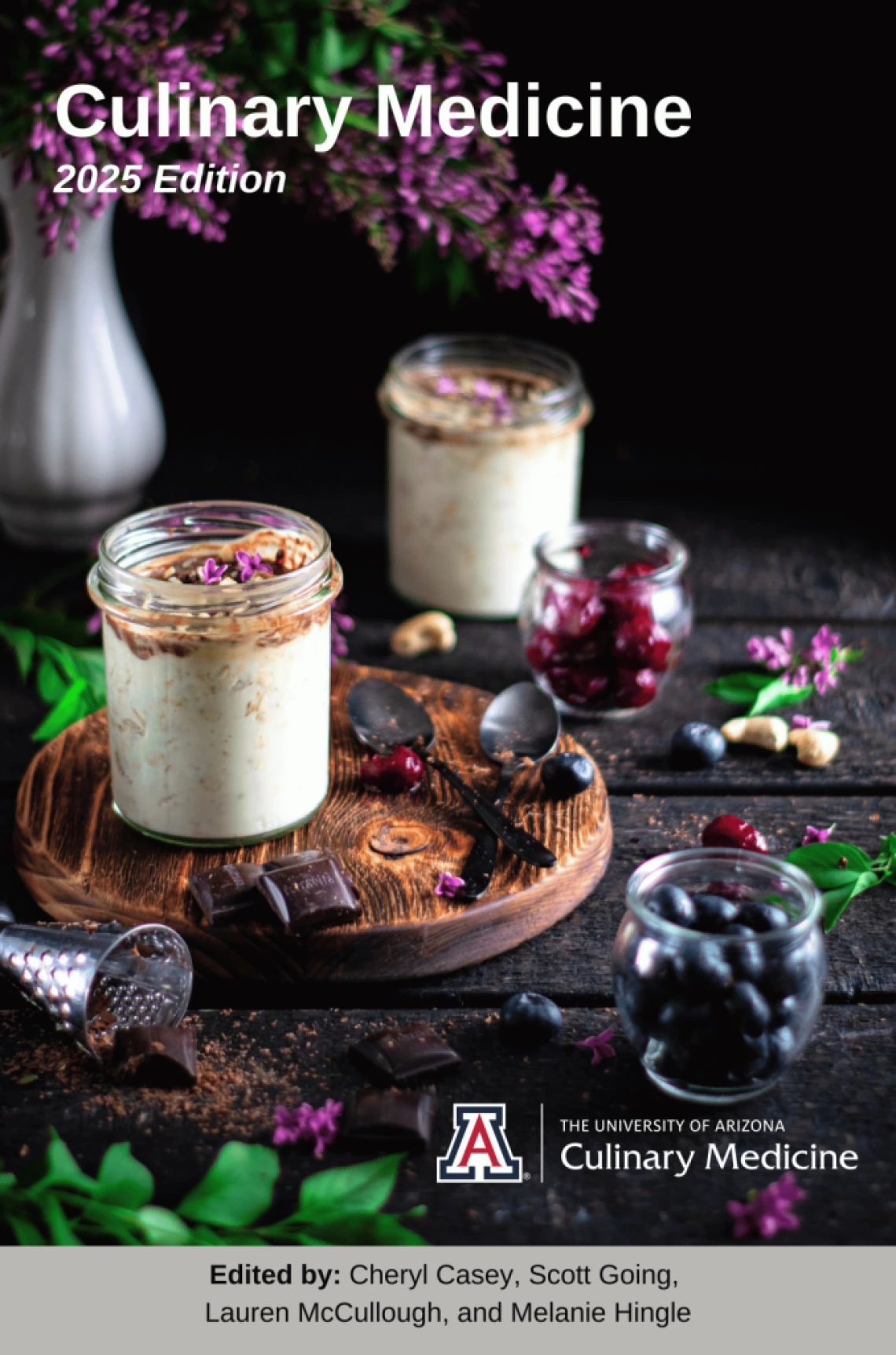A new tool to help cut through the "nutrition noise"
A new open educational resource developed by the School of Nutritional Sciences and Wellness, University Libraries and their partners offers practical, evidence-based nutrition advice.

Trying to “eat healthy” is a noisy business these days. From social media, to the news media, to the ads on TV, we’re constantly bombarded by advice about what food is good for us – and what isn’t. It can be hard to know what information is evidence-based and what’s just noise. Even physicians can feel ill-equipped to counsel their patients on dietary questions, since most medical schools require fewer than 25 hours of nutrition education.
The School of Nutritional Sciences and Wellness (SNSW), the University Libraries, the College of Medicine – Phoenix (COM-P) and Cooperative Extension (CE) have partnered to produce a new open educational resource (OER) to help cut through the nutrition noise. Culinary Medicine, published December 23, 2024, offers practical, evidence-based information on eating for health, whether that means managing a diet-sensitive chronic illness or creating personalized meal plans.
“We didn’t want to recreate the wheel with another book about the fundamentals of nutrition,” said Melanie Hingle, a professor in SNSW and one of the book’s editors. “As someone who works in community outreach, I’ve seen that there’s an emergent need for practical, applied nutrition. We wanted to create something that addresses real-world dietary questions, like how to shop for nutritious foods on a budget.”
Authors included 18 faculty and staff experts from SNSW, COM-P and CE, with contributions from 10 students. The book was peer-reviewed by three nutritional science professors from other universities.
An accessible and adaptable resource
As an OER, Culinary Medicine is available for users to freely read, download, print and share. Hingle stated one of the inspirations for the project was to desire to create something that would help reduce cost barriers for students and other potential users.
“I often hear from students that the cost of textbooks is a major financial burden,” she said. “Publishing the book as an OER is one way we can try to reduce that as a barrier. The prospect of making it easier to access this resource was exciting to us.”
Cheryl Casey, who leads the library’s OER initiatives, explained another benefit of OERs is their adaptability.
“They’re customizable, so other universities or community groups can adapt them to their specific needs, translate them or build upon them,” she said. “They help share the expertise of our faculty, staff and students to benefit people in Arizona and around the world.”
For students, with help from students
Culinary Medicine was developed in part for use as a course textbook for SNSW students, some of whom also served as book contributors.
Natalia Rodriguez, a third-year nutrition and dietetics major, provided research support for several chapters of the OER. She and other students also provided authors and editors with valuable feedback from a student perspective.
“I really appreciated how the team responded to our ideas,” she said. “I remember at one point, we suggested multiple choice questions within the textbook, so readers could check their knowledge. And they put them in! It’s very rewarding to know that I genuinely contributed to something that will hopefully benefit others.”
A larger initiative
The new textbook was created as part of the University of Arizona’s Culinary Medicine Initiative, which blends the art of cooking with the science of medicine and nutrition to use food to prevent and help manage chronic diseases.
Scott Going, the former director of SNSW and another of the book’s editors, said it made sense to create an OER as part of the initiative.
“Culinary medicine is an emerging area of interest across the country,” he explained. "The OER allows us to share our expertise with others and makes it possible for them to adapt it for their own communities.”
The project was sponsored in part by NovoNordisk Inc., which notes that the project aligns well with its social impact strategy.
“Our commitment to reducing the burden of chronic diseases drives us to seek innovative solutions that approach issues differently,” said Kate Masuch, the company’s director of Corporate Sustainability and Social Impact. “Integrating practical nutrition and culinary education, along with hands-on learning experiences in the community for the next generation of health professionals, is a powerful way to influence healthier eating habits for both people and patients.”
Culinary Medicine will be used in the curriculum of SNSW and College of Medicine courses beginning in Fall 2025, but its reach has already extended beyond the U of A.
“We know it will be used this spring at Northern Arizona University in a ‘culinary arts for health’ class,” Casey said. “In addition to being used as a college textbook, we hope it will be a useful resource to patients and families, community groups, health practitioners and lifelong learners.”
